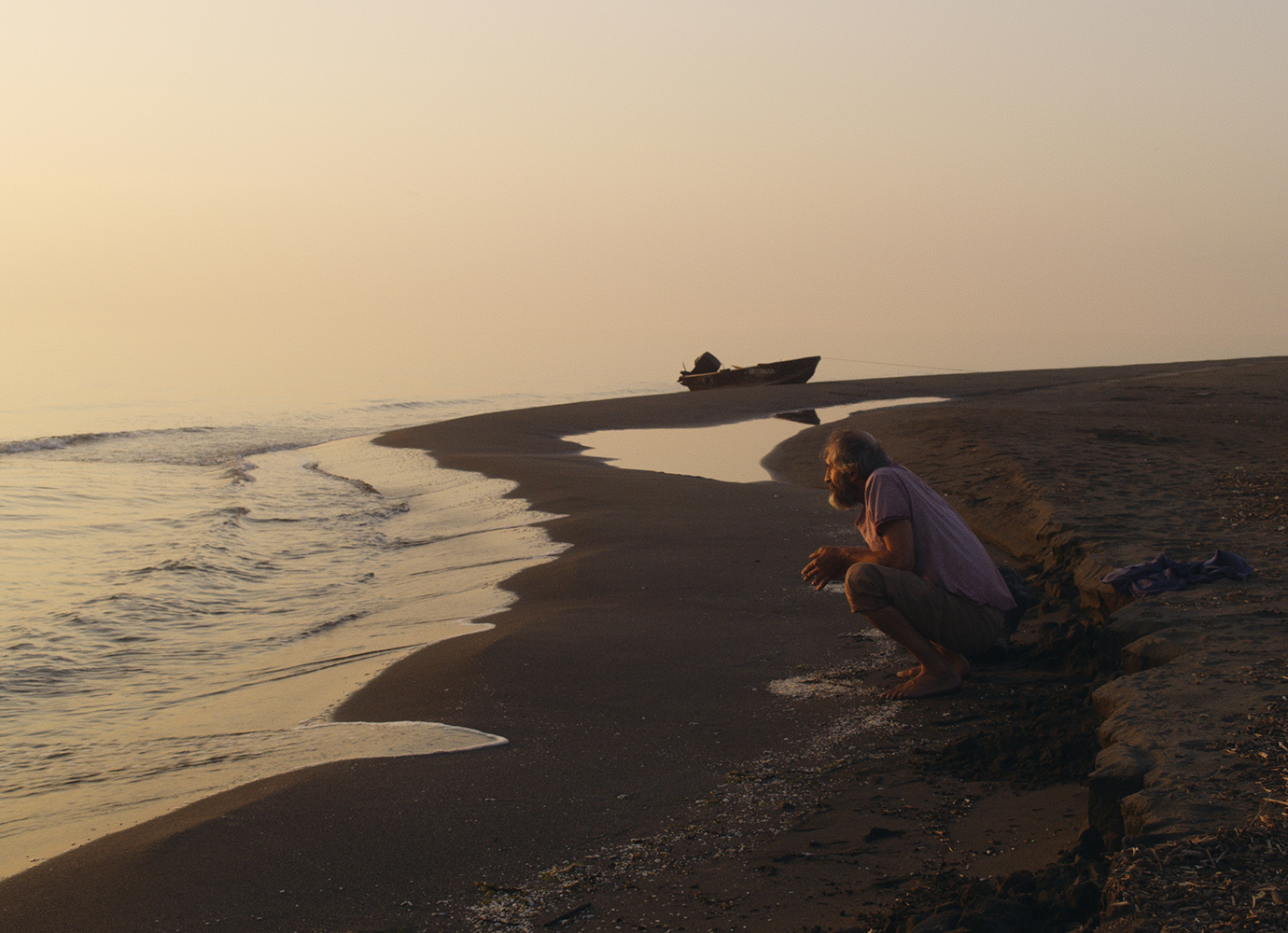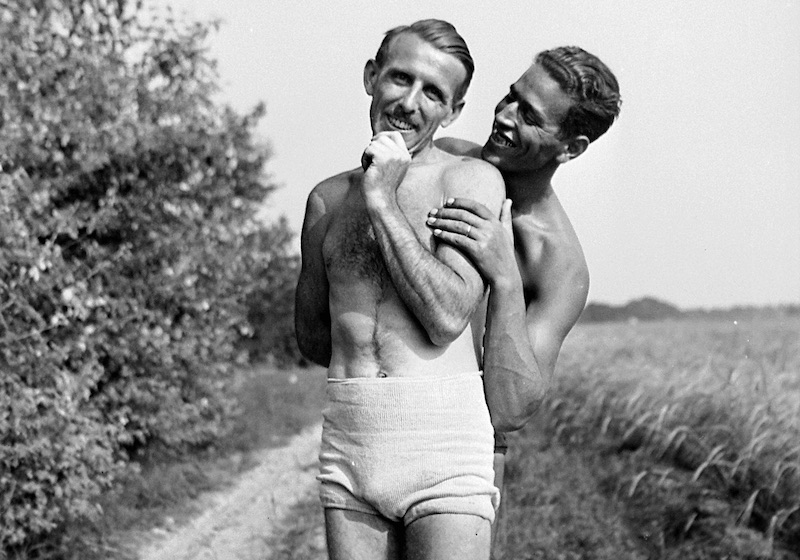Desire International: unpacking the language of love and repression
We are used to seeing banners that are tied to institutions: national colours, coats of arms, corporate or political signage. But in Yevgeniy Fiks latest artwork, “Dictionary of the Queer International”, banners become a tender, deeply personal canvas for the language of love and forbidden sensuality. Currently on show at London’s Pushkin House, the artwork shows pastel-coloured strips of fabric (designed especially by Katya Sivers), adorned with words and phrases in different languages — each relating to gender and sexually-noncoforming communities around the world. There are reclaimed slurs and words from queer slang. Some come from the coded languages LGBTQ+ communities around the world use to keep themselves safe from a hostile mainstream, known as “Tematicheskiy” in Russia, “Beki” in the Philippines, “Polari” in the UK or “Pajuba” in Brazil.
“The idea was to compose a dictionary of a queer fusion language. It’s probably utopian, but the intent was to push back against the disproportional influence of Western, and in particular Anglo-American, brands of queer culture on local gender and sexually-noncoforming communities around the world,” Fiks exlains. “Dictionary of the Queer International” is a poetic statement of radical unity of queer people around the world which is critical of borders, governments and rainbow capitalism, all of which divide LGBTQ+ communities.
The immersive installation is a departure point for Pushkin House’s larger exhibition Desire International. It explores queer language, sensuality and imagination through the works of both Fiks and his fellow Russian artist Ian Ginsburg. In “A Barrack Named Desire: Reframing Viktor Duvidov”, Ginsburg recontextualises the legacy of prominent Soviet artist Viktor Duvidov. Known primarily as a children’s book illustrator, Duvidov was convicted for homosexuality during the Soviet era. Ginsburg’s work mixes Duvidov’s family-friendly work with queer, erotically-charged etchings and woodcuts that the artist later made away from the mainstream, partially based on his prison experiences.
“In [‘A Barrack Named Desire’] I am acting like an artist-decorator for the works of Viktor Duvidov,” Ginsburg explains. “His mainstream graphics, which were printed en masse, come in contact with more rare etchings and woodcuts and other unique works, erasing the boundary between these art forms.”
Ginsburg’s pieces expose the particularities of queer art across the eras: the tension between trauma and innocence, playfulness and the taboo, and how art is perceived differently in different contexts. Together, the works of Fiks and Ginsburg offer to examine the very notion of queer artistic expression, thinking and sexuality as a dialogue across countries and historical eras.
For The Calvert Journal, artist Yevgeniy Fiks and Pushkin House curator Denis Stolyarov tell the story of Desire International through five artworks from the exhibition.
Dictionary of the Queer International
Yevgeniy Fiks: “‘Dictionary of the Queer International’ came out of several other projects of mine that dealt with languages. In fact, I have two other art dictionaries made as art-projects: ‘Soviet Moscow’s Yiddish-Gay Dictionary’ and ‘Mother Tongue/Родная речь’, which was about the Soviet-era Russian gay slang and which I also used to write poetry. I guess I often lean towards projects that deal with languages because of my own linguistic situation as an immigrant artist. But it’s also because of my 20-year engagement with the Yiddish language as an underdog language, and my thinking about Yiddish colours all my other language-related projects. In terms of timing, of dealing with languages now, I think it’s important to see languages not as abstract means of communication, but to also see political power and abuse embedded into them. So I think there is a need for emancipatory, horizontal, nonviolent languages, those that don’t have armies and navies.”
“Perfect Lover”
Denis Stolyarov: “[In ‘Perfect Lover’, Ginsburg combines an original drawing of a ballet dancer (the only unique piece by Duvidov in the exhibition), a typical subject of homoerotic observation, with a piece of jolly wallpaper in the style of the 1960s and scraps of Duvidov’s illustrations. [They include,] for instance, a piece of rainbow, which somehow demonstrates the queer potential of drawings originally intended for children. The juxtaposition of eroticism and innocence, often exploited in pornography, is used here to reflect on the double identity of Duvidov, who was a fan of classic opera and ballet, and often sketched ballet dancers. For the final version of the work Ginsburg added a shirt – as an additional frame that adds to the corporeal perception of the collage.
“Pleshke-Globe”
Yevgeniy Fiks: “The piece ‘Pleshke-Globe’ comes from another project of mine from 2016, ‘Pleshka-Birobidzhan’. [It was] a fact-and-fiction project about a fictional “gay and lesbian autonomous region of USSR,” which might have existed alongside or overlapped [with] the Soviet Jewish Autonomous Region of Birobidzhan in the Far East. The writing on the globe is the word ‘pleshka’ for ‘a gay cruising site’. The word ‘pleshka’ is written on the globe in Yiddish. The word comes from Russian, of course, and transliterating it into Yiddish is an act of adopting and entering the word ‘pleshka’ into the Yiddish vocabulary. As far as I know, this is the first word for a ‘gay cruising site’ in the Yiddish language so far.
“Border Guard”
Denis Stolyarov: “‘Border Guard’ depicts a soldier, probably on the border with Afghanistan: Duvidov travelled to Pamir as a research trip and created a series of drawings and prints of military men. The cut-out says, ‘Twelve Magic Sticks’, referring to a sexual euphemism ‘to throw a stick’ (meaning ‘to come’), [which is] particularly important in the gay community. [However, it can] also be read as the lines on military epaulettes. The use of untranslatable slang here connects ‘Border Guard’ with the principles of ‘Language of the Queer International’, suggested by Yevgeniy.
“Well-groomed Poland”
Denis Stolyarov: The work combines a prison etching with illustrations for Rudyard Kipling; positioned in a similar pose, a young man and a leopard convey very similar sensuality, with the tail attaining almost phallic connotations. The title of the work as well as the word ‘Poland’ refer to a small project that Ian developed with his former boyfriend; therefore Ian intertwines his own biography with the biography of Duvidov.
Desire International is open at Pushkin House in London from the 5th January until 12th of February 2022.


